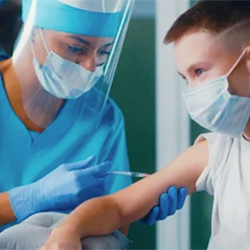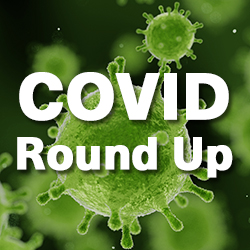By Ethan Covey
The Pfizer-BioNTech BNT162b2 messenger RNA (mRNA) COVID-19 vaccine is safe for use among adolescents 12 to 17 years of age, and remains recommended for all children 12 years of age and older, according to the CDC’s Advisory Committee on Immunization Practices (ACIP).
Although mild local and systemic reactions are common among adolescents who receive the vaccine, serious adverse events, including myocarditis and myopericarditis, are rare (MMWR Morb Mortal Wkly Rep 2021;70[31]:1053-1058).
“The benefits of vaccination continue to outweigh the risks, especially as the delta variant continues to spread,” Anne M. Hause, PhD, an epidemiologist with the CDC COVID-19 Response Team, told Infectious Disease Special Edition.
Fewer cases of COVID-19 have been reported in children (ages 0-17 years) compared with adults. Although children have been less affected by COVID-19 compared with adults, children can get sick from COVID-19 and can spread COVID-19 to others. Some children may develop severe illness. Children with underlying medical conditions are at increased risk for severe illness compared to children without underlying medical conditions.
Almost 55,000 children have been hospitalized from COVID-19 between Aug 1, 2020 and Sept. 5, 2021, and most appear to have occurred since July 2021. The seven-day average for pediatric hospitalizations is 355.
Rates of COVID-19-associated hospitalizations are also lower in children of all ages compared to adults, but some children develop acute COVID-19 symptoms requiring hospitalization. Though it is rare, some children who have had COVID-19 may later develop multisystem inflammatory syndrome in children (MIS-C), a rare but serious condition associated with COVID-19.
Although there are three COVID-19 vaccines authorized for use in the United States, only the Pfizer-BioNTech vaccine has been OK’d for use in adolescents from 12 to 17 years of age. Despite the recent FDA approval, those 12 to 15 years of age would still be receiving the vaccine under the original emergency use authorization authorized on May 10, 2021.
Reports about myocarditis began appearing in June 2021. Most cases appeared in male adolescents after the receipt of their second dose of the vaccine.
To reevaluate the safety of the vaccine among the adolescent population, the ACIP conducted a risk assessment using data reported to the Vaccine Adverse Event Reporting System (VAERS) and v-safe smartphone-based safety surveillance system from Dec. 14, 2020, to July 16, 2021.
Among the 8.9 million adolescents who received the vaccine during the study period, adverse events were similar to those described in clinical trials, with the exception of myocarditis.
VAERS reports were received for approximately one per 1,000 vaccine recipients, 90% of which reports were for nonserious conditions. A total of 9,246 adverse events among adolescents were reported to VAERS, 58.1% of which occurred in adolescents aged 12 to 15 years, and 41.9% in people aged 16 to 17 years. The most common adverse events were dizziness (20.1%), syncope (13.3%) and headache (11.1%). Although rates of syncope were fairly high, previous studies have identified that fainting is common among adolescents following receipt of any vaccine (MMWR Morb Mortal Wkly Rep 2008;57[17]:457–460).
Overall, more than 90% of adverse events reported to VAERS were nonserious. There were 893 reported severe adverse events, including 397 reports of myocarditis and 14 deaths. However, there were “no deaths associated with myocarditis,” Dr. Hause noted.
And of the 14 reports of death, there was “no evidence to suggest a causal association with vaccination,” she said.
Among 62,709 adolescents 12 to 15 years of age enrolled in v-safe, local and systemic reactions were common, yet fewer than 1% of adolescents aged 12 to 17 years required medical care in the week after receipt of either their first or second dose, and only 0.04% required hospitalization.
According to Dr. Hause, the CDC and ACIP will continue to monitor adverse events, including myocarditis, as COVID-19 vaccination continues. Yet, the risk for adolescents falling ill with any serious event after vaccination is slim enough that “everyone 12 years and older get vaccinated as soon as possible to help protect against COVID-19,” she said.
“The ACIP estimated that for every million second doses of mRNA COVID-19 vaccine administered to males aged 12 to 29 years, 11,000 COVID-19 cases, 560 hospitalizations, 138 ICU admissions and six deaths due to COVID-19 could be prevented, compared with 39 to 47 expected myocarditis cases after COVID-19 vaccination,” Dr. Hause added.




